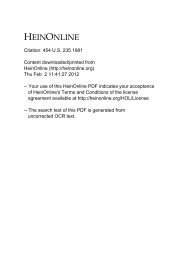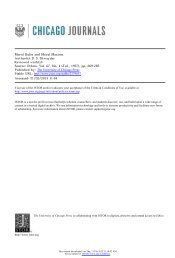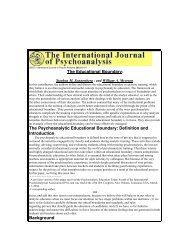Coagulation Factors in Controlling Traumatic Bleeds: FFP, PCC, or ...
Coagulation Factors in Controlling Traumatic Bleeds: FFP, PCC, or ...
Coagulation Factors in Controlling Traumatic Bleeds: FFP, PCC, or ...
Create successful ePaper yourself
Turn your PDF publications into a flip-book with our unique Google optimized e-Paper software.
Kal<strong>in</strong>a M, et al. A protocol f<strong>or</strong> the rapid n<strong>or</strong>malization of INR <strong>in</strong> trauma patients with <strong>in</strong>tracranial hem<strong>or</strong>rhage on prescribed<br />
warfar<strong>in</strong> therapy. 2008. 41<br />
Purpose To evaluate efficacy and safety of a Proplex T protocol f<strong>or</strong> rapid reversal of warfar<strong>in</strong>-<strong>in</strong>duced coagulopathy<br />
Design Study group: prospective<br />
Control group: hist<strong>or</strong>ical<br />
Patient Inclusion<br />
Population Trauma patients<br />
Hist<strong>or</strong>y of prescribed warfar<strong>in</strong> therapy<br />
Intracranial hem<strong>or</strong>rhage on CT scan<br />
INR >1.5<br />
Outcomes ICU length of stay; hospital length of stay; INR; Delta INR; Time to complete reversal of coagulopathy; Time to operate<br />
procedure; Use of <strong>FFP</strong> and vitam<strong>in</strong> K; M<strong>or</strong>tality<br />
Methods<br />
Patients who met <strong>in</strong>clusion criteria received weight-based dose of <strong>PCC</strong>, Proplex T, acc<strong>or</strong>d<strong>in</strong>g to manufacturer<br />
guidel<strong>in</strong>es f<strong>or</strong> n<strong>or</strong>malization of coagulopathy<br />
o 1 unit/kg * body weight <strong>in</strong> kg * % desired <strong>in</strong>crease <strong>in</strong> plasma fact<strong>or</strong> IX<br />
Proplex T: conta<strong>in</strong>s concentrated f<strong>or</strong>ms of fact<strong>or</strong>s II, VII, IX, and X<br />
Control group: hist<strong>or</strong>ical; received <strong>FFP</strong> + vitam<strong>in</strong> K<br />
Statistics<br />
Perf<strong>or</strong>med us<strong>in</strong>g Chi 2 and Fisher’s exact test f<strong>or</strong> nom<strong>in</strong>al variables<br />
Mann Whitney U f<strong>or</strong> non-n<strong>or</strong>mally distributed cont<strong>in</strong>uous variables<br />
Significance denoted by a P ≤0.05<br />
Results Control group (n=65) vs. study/protocol group (n=46):<br />
Patient groups:<br />
111 trauma patients 46 patients <strong>in</strong> the study group, 65 patients <strong>in</strong> the control group<br />
Mean age ~77 years<br />
GCS ~12 <strong>in</strong> both groups<br />
100% of patients were <strong>in</strong>volved <strong>in</strong> blunt trauma – falls and mot<strong>or</strong> vehicle accidents<br />
Similar demographics, ISS, GCS, and head AIS<br />
Increased number of patients receiv<strong>in</strong>g <strong>PCC</strong> (54.3% vs. 35.4%, p=0.047)<br />
Use of <strong>FFP</strong> and vitam<strong>in</strong> K was similar between groups<br />
Parameters of coagulopathy reversal & outcomes:<br />
Improved time to n<strong>or</strong>malization of INR (INR ≤ 1.5) <strong>in</strong> study group (331.3 vs. 737.8 m<strong>in</strong>, p=0.048)<br />
Improved number of patients with a therapeutic reversal of coagulopathy <strong>in</strong> study group (73.2% vs. 50.9%, p=0.026)<br />
Improved time to the operat<strong>in</strong>g room <strong>in</strong> study group (222.6 vs. 351.3 m<strong>in</strong>, p=0.045)<br />
No significant difference <strong>in</strong> ICU length of stay (~6-7 days), hospital length of stay (~10-13 days), <strong>or</strong> m<strong>or</strong>tality (~23%)<br />
between groups<br />
<strong>PCC</strong> use (n=48) vs. no <strong>PCC</strong> use (n=63):<br />
Patient groups:<br />
Patients who received <strong>PCC</strong> had higher head AIS sc<strong>or</strong>es (4 vs. 3, p=0.003); lower GCS sc<strong>or</strong>es (10 vs. 13, p=0.002)<br />
Parameters of coagulopathy reversal & outcomes:<br />
Longer ICU days (7 vs. 5 days, p=0.01), and longer hospital days (14 vs. 9 days, p=0.02) <strong>in</strong> <strong>PCC</strong> group<br />
Improved time to n<strong>or</strong>malization of INR <strong>in</strong> <strong>PCC</strong> group (327 vs. 758 days, p

















